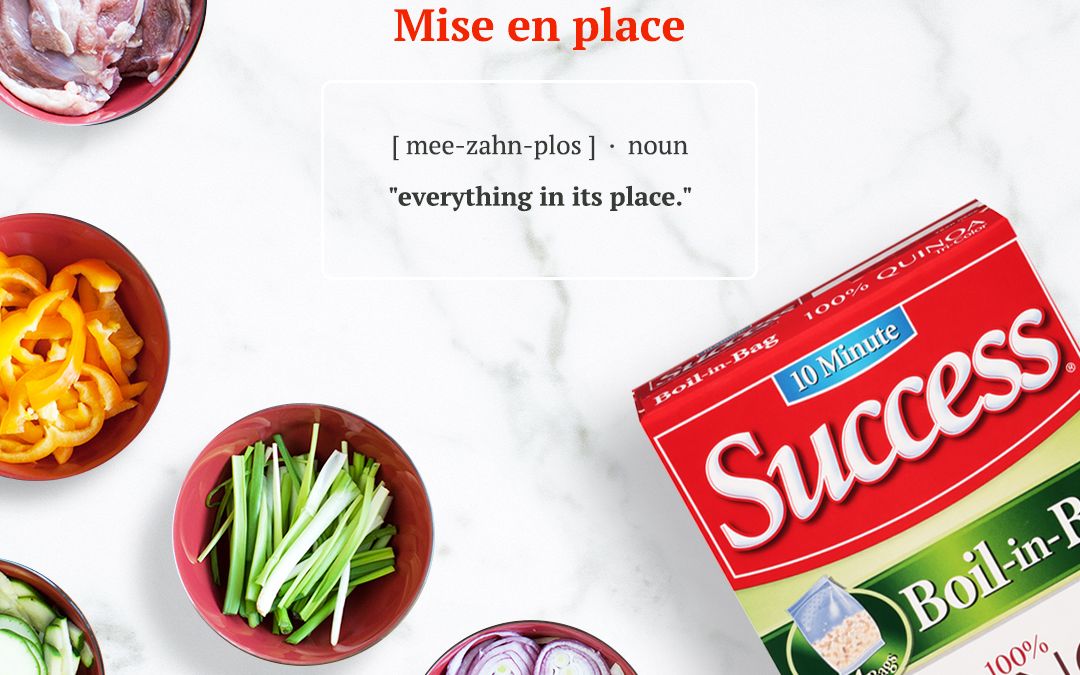With everything there is to know about cooking and culinary skills, it can sometimes be a little overwhelming. But at Success® Rice, we want to help you succeed at mealtime, not only with our convenient and quality rice and quinoa, but also with the necessary skills to make flavor-packed recipes at home.
In order to boost your “cook smarts”, or skills and know-how in the kitchen, we’ve asked our culinary experts and in-house chef for their inside information to get started! They let us in on a few must-know tips that you can implement in order to upgrade your skills to pro level in no time including everything from which cooking oil to use and the right knife to cut with. So get your notebook ready and let’s dig in!
Content Guide For What You’ll Find:
- Mise en Place
- Cooking Oil and Smoke Points
- Necessary Kitchen Staples: Spices, Seasonings, Broth and Vinegar
- Learn the Art of Cutting
- Ingredients to Start a Meal
Before Beginning
Prepare your Mise en Place.
Cooking, as chefs know, is an artform. In order to ensure recipe success, you’ll need to begin your masterpiece by preparing your mise en place, French for everything in its place. If you’ve ever glanced into a chef’s kitchen, you’ll notice they have everything they need, ready to play a role in the recipe before it has even begun. To do this at home, take a look at your recipe ingredients and steps so you can have everything gathered, organized and prepared in advance.
Cooking Oil and Smoke Points
Before your ingredients hit the pan, it’s important to know which cooking oil is best. There may be a wide variety of options available at the store, but cooking oils and fats are not one-size fits all when it comes to flavor or smoke points. If you’re not familiar with smoking points, that’s when your oil or fat starts to smoke and essentially burns because the compounds begin to break down on account of too much heat exposure.
Take a look at this simple chart with commonly used oils in everyday use and their smoking point:

These oils and fats come from natural products, and those with a higher smoke point interact better with heat as they have undergone a larger refinement process. Unrefined oils like extra virgin olive oil have much more flavor, but a lower smoke point as they have not been refined.
Why is it important to know an oil smoke point?
The truth is that if your cooking oil is overheated, it can seriously change the flavor of your meal, and not for the better. Before choosing which oil to use, you’ll need to consider a few things:
- Smoke point: What kind of recipe are you making? If you’re deep-frying or pan-frying zucchini fritters like in this Mediterranean Rice Bowl, you’ll need to cook oil over high heat without much added flavor – use canola or peanut oil. If you’re lightly sautéing a few vegetables over low-medium heat, use butter or olive oil.
- Flavor added: More refined oils such as peanut or canola have a neutral flavor, whereas lesser refined oils like avocado, and extra virgin olive oil have more natural flavor and aroma. Many Asian-inspired recipes use sesame oil to add flavor to sautéed fried rice or vegetables like in this Quick Vegetable Fried Rice.
- Benefits added: Unrefined oils with a lower smoke point will naturally carry more benefits than those that have been refined.
Tips for storing oils: Keep oil tightly sealed in a cool, dark place and, if they come in a translucent bottle, make sure they are out of direct sunlight. If you’re reusing oil for frying or other purposes, make sure it is completely cool before storing.
Necessary Kitchen Staples: Spices, Seasonings, Broth and Vinegar
Anyone looking to improve their know-how in the kitchen also needs to understand the importance and versatility of a few quality kitchen staples.
Must Have Spices and Seasonings
When it comes to flavor in your meals, spices and seasonings have the power to upgrade any dish. Whether it starts with the marinade, in the skillet or in the sauce to drizzle on top, every aspiring home chef needs to have these spices and herbs on their shelves.
Top 10 Spices Chefs Have in Their Kitchen:
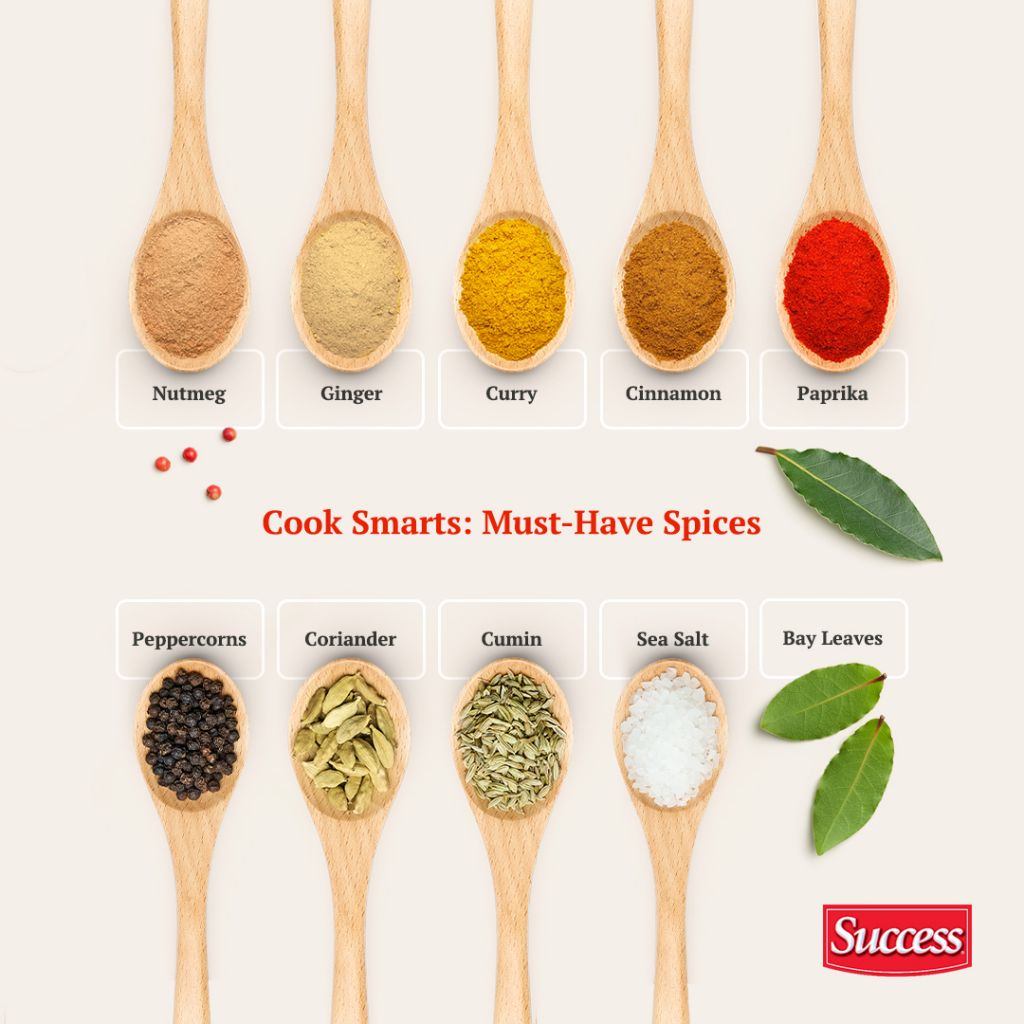
Of course, sea salt is a kitchen essential alongside dried and ground varieties of nutmeg, ginger, curry, cinnamon and paprika. There are also those that can be freshly ground at home or used whole such as peppercorns (black pepper), coriander and cumin. Lasly, although not eaten, bay leaves have the power to add loads of flavor when simmered with cooking liquid.
Want to explore more ways to start incorporating spices in your meals? Look no further than our beginner’s guide to making curry dishes which are loaded with flavor from a wide variety of common spices and seasonings.
Storage Tips: Believe it or not, spices and seasonings also have expiration dates to keep in mind. So, to ensure longer freshness, store them at room temperature in airtight containers, preferably in dark, cool spaces.
Essential Holiday Spices
While there are ideal and versatile spices for everyday use, there are also certain spices that, when combined together, offer a bit of nostalgia for the taste buds. When the holiday season begins, there are 5 essential spices that have the power to lift your spirits in one single bite: cinnamon, nutmeg, clove, ginger and allspice.
Prepare your own pumpkin spice blend this year using these 5 spices! Save any extra to top your morning bagel, sprinkle over fruit, add to sauces and serve on vegetables like roasted pumpkin or squash.
And, while they may be indispensable for treats like Rice Pudding, Pumpkin Pie, fruit cakes and cookies, these items can be used to make seasonal beverages, glazes for meat like ham and other savory dishes.
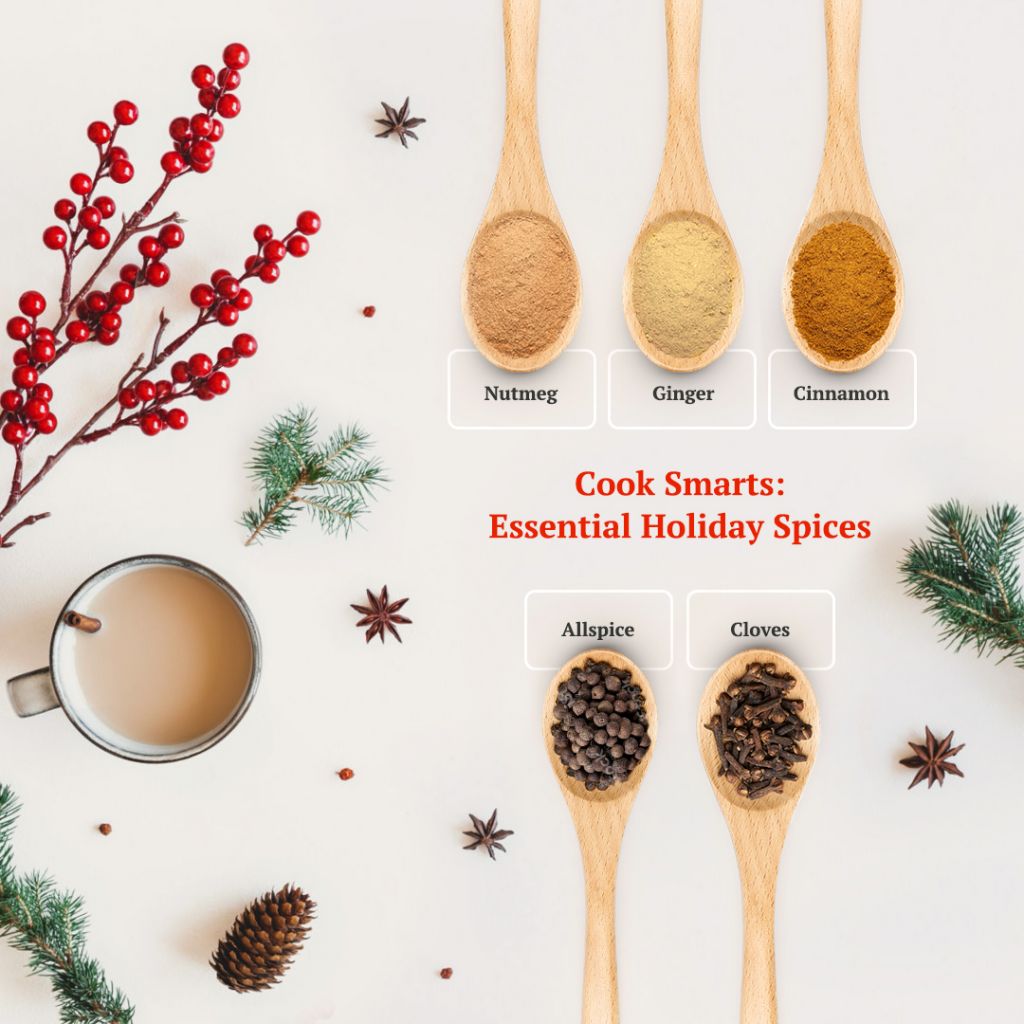
Use a few of these helpful tips for incorporating more into your holiday meals:
- Whole nutmeg that is freshly ground with a small grater is superior in flavor to packaged pre-ground.
- Fresh ginger tastes floral, while ground is spicy and less potent so the two should not be used interchangeably.
- High quality cinnamon will add color and slightly darken recipes. It also adds its distinct flavor, fragrance and a spicy depth to a wide array of foods.
- Allspice gets its name because it tastes like the combination of cinnamon, nutmeg and cloves.
These spices also compliment meats such as ham, beef or lamb perfectly. Try using a combination of cinnamon, allspice and nutmeg along with cardamom in this recipe for Lebanese Lamb Rice. Or, try allspice and nutmeg together with garlic and salt in a Mushroom and Meatball stew.
Using Broth, Beyond Soup
Right alongside your spice rack, we suggest keeping a few beef, chicken or vegetable bouillon cubes or broth in your pantry. Beyond a simple soup ingredient, broth is a wonderful water substitute that can enhance the flavor in a rich and creamy risotto, paella or any other rice dish, it can also be used to steam vegetables or braise meats for richer flavor and more tender texture. Save extra broth to create a homemade sauce like teriyaki or gravy that you can drizzle over any holiday dish or even add it to a baked casserole. The options are endless when you’ve got the right tools on your shelf.
Pro tip: For extra flavorful homemade broth or stock, save your leftover chicken, turkey and beef bones in the fridge or freezer along with vegetables like onions, carrots, celery or potatoes. Boil everything together with water and a generous sprinkling of salt.
A Guide to Cooking with Vinegar
One highly important ingredient in the kitchen that is more often than not overlooked is vinegar. With a wide variety of options and flavors available, this kitchen essential is so much more than a salad dressing. It can deepen the flavor of meats, vegetables and soups, preserve or pickle foods, work as a convenient ingredient substitution for baked goods and is essential for a quintessential sweet and sour sauce blend.
With lots of options on the market, it might be difficult to know which is best to keep on your shelf. Start by taking a look at these four, including their flavor profiles, and how you can use them!
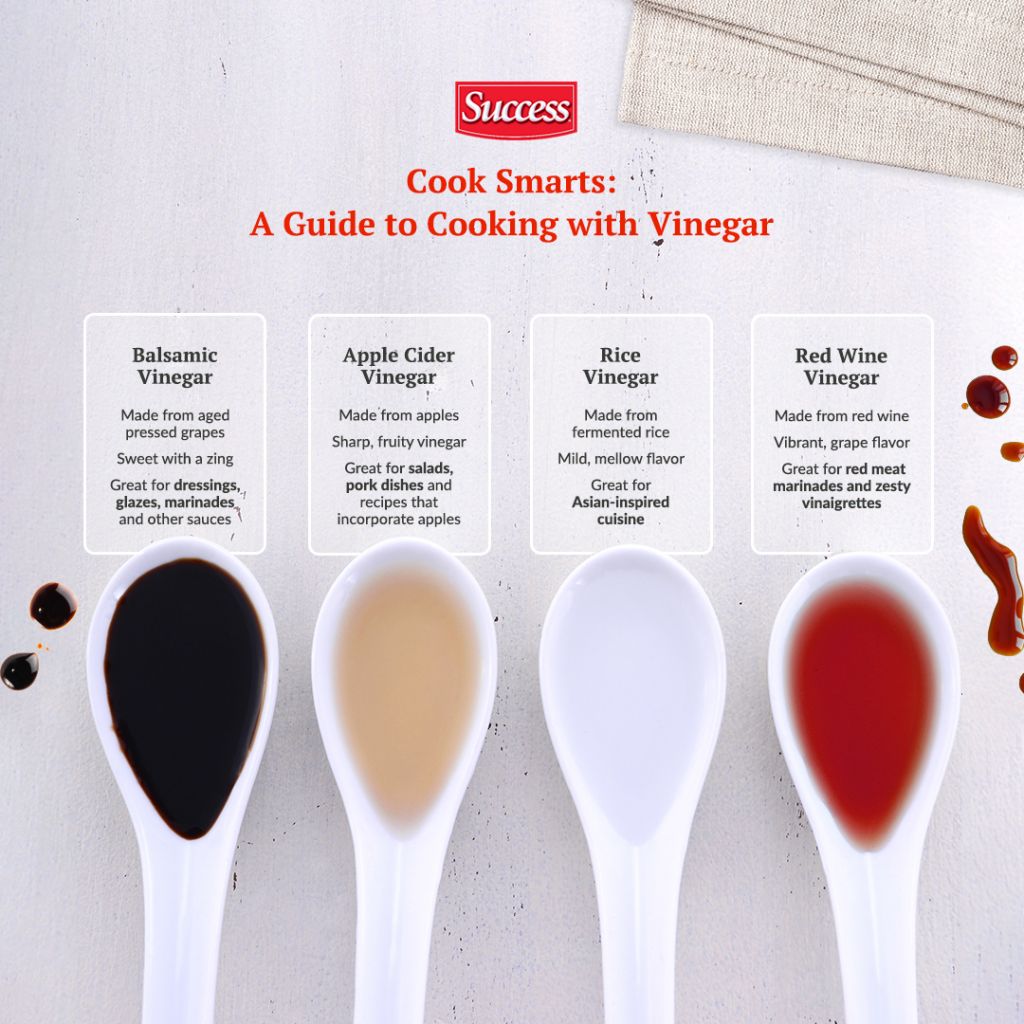
Did You Know? If you’re missing an egg in your baking recipe or looking for a vegan substitution, combine 1 tsp baking soda and 1 tbsp vinegar (both apple cider vinegar and white vinegar will work) together instead. Or, make homemade buttermilk for some Rice Cakes by combining 1 cup of milk with 1 tbsp vinegar, stir and let stand for 10 minutes before using.
Learn the Art of Cutting
There is much to be learned when it comes to cutting your ingredients and it starts with understanding that flavor and texture can be found in unlikely places such as how your food is cut.
Selecting the Right Knife
A sharp, good quality knife that is ideal for the task can make all the difference in saving time and energy when preparing food. If you’re starting from scratch, it’s always useful to have a chef’s knife on hand alongside a smaller paring knife. Work your way out from there to meet your needs.
Take a look at this guide to decide what you’ll need next:
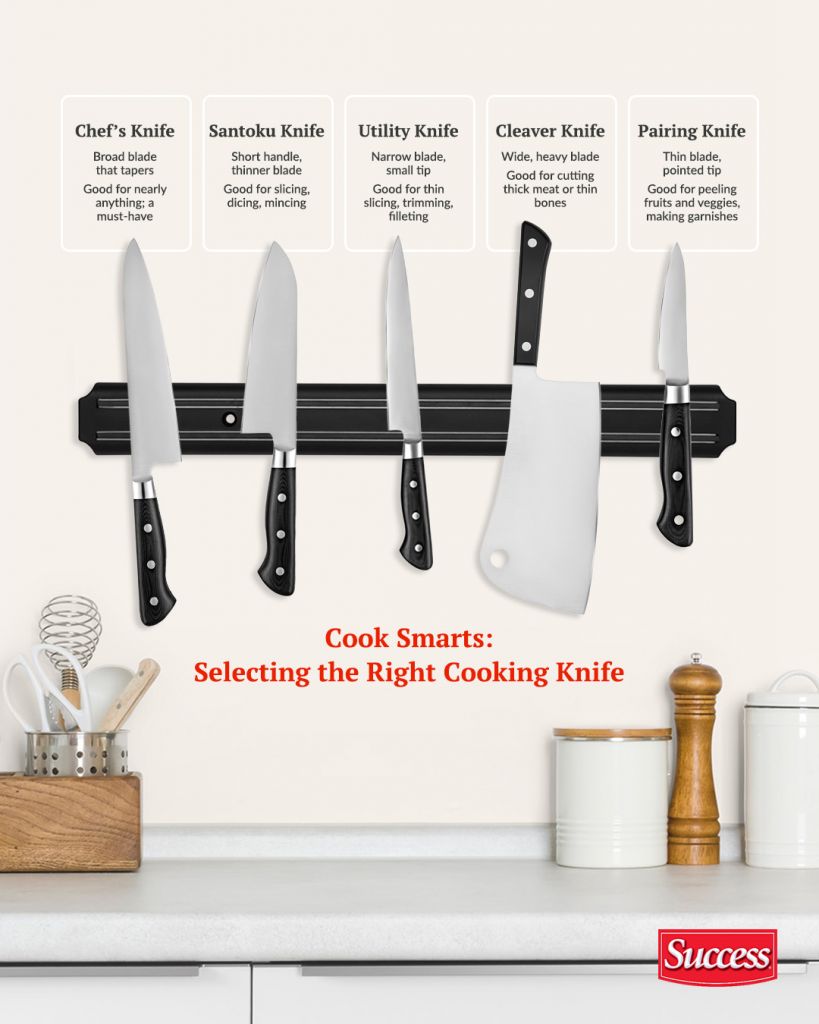
A Guide to Culinary Cutting Terms
A chef knows that certain dishes require specific cuts that may be more uniform than others for the ingredients to cook evenly. How your ingredients are cut can make or break the flavor of a dish, so we’ve prepared a crash course in six different culinary cutting styles.
Before your next recipe, practice these cuts using a quality chef’s knife to improve your craft and ultimately upgrade your meals.
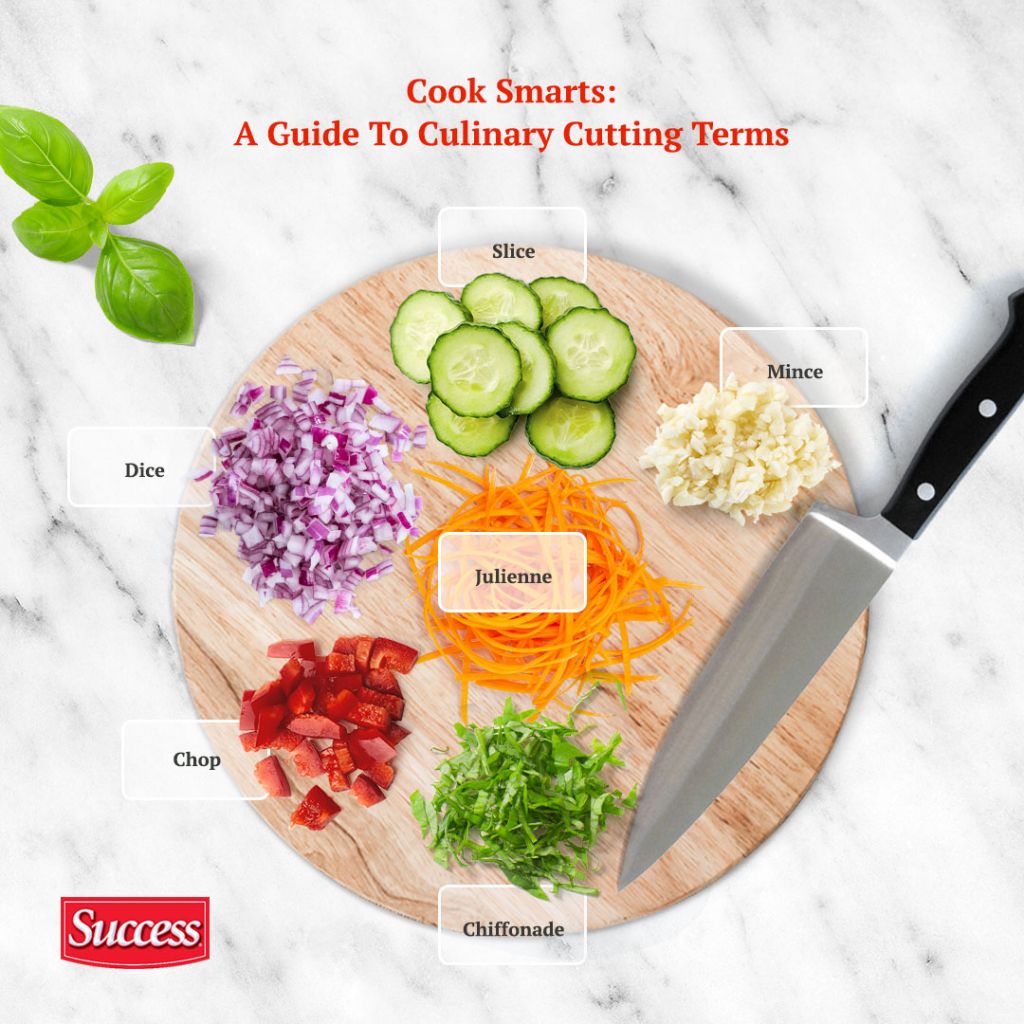
- Chopping: The most common cutting term, food can be chopped into chunks that may or may not be completely uniform.
- Dicing: In contrast, food is diced into small cube-like pieces and requires precision so the ingredients cook evenly and it gives the dish a polished look.
- Slicing: This refers to thinly and uniformly cutting across the grain. See how beautiful it can be when layering sliced vegetables, such as beets, in this Roasted Golden Beet “Carpaccio” recipe.
- Mincing: When ingredients are minced, they are cut into very thin and small pieces. Recipes commonly call for garlic to be minced before sautéeing.
- Julienne: This French term refers to thinly slicing or cutting into long, uniform strips such as matchsticks. Try to julienne the bell peppers in this Sweet and Sour Chicken and Rice dish.
- Chiffonade: This term refers to cutting leafy herbs or greens like basil or spinach into long strips or ribbons.
Tips for Cutting Onions: One versatile ingredient that might typically be cut into a majority of these styles is the onion. And, while there are a wide variety of onions that serve different purposes, use these tips to chop a standard yellow onion without needing to grab the tissue box!
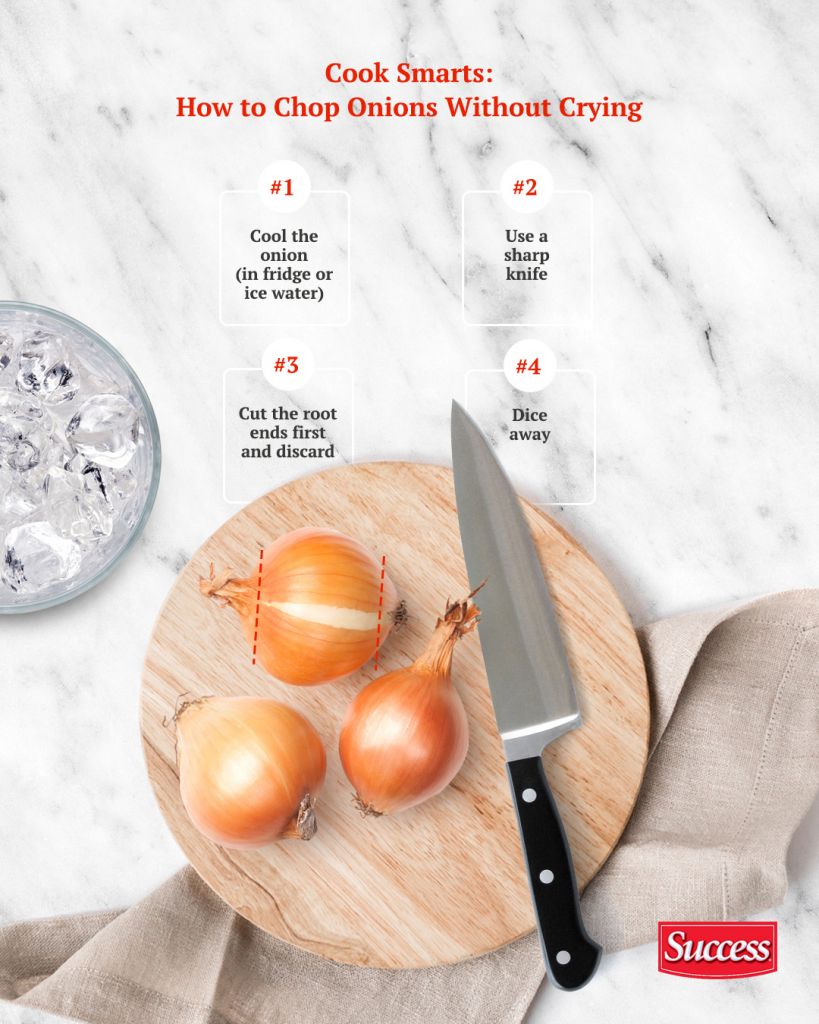
Ingredients to Start a Meal
How to Choose Onions
When you feel confident to get started in the kitchen with a recipe in hand, it might be a little confusing if your recipe simply calls for “onion”. So, we’ll take you through some of the most common types to set you and your recipe up for success.
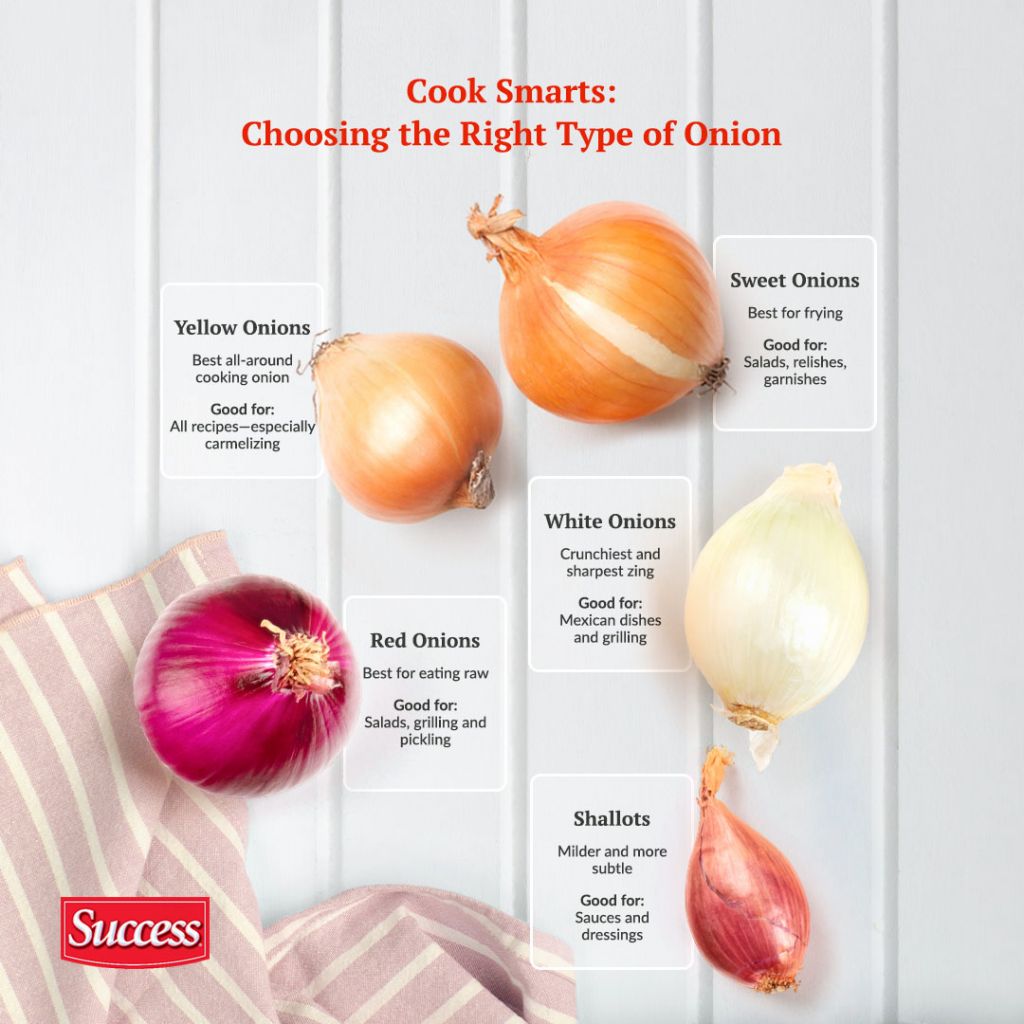
- Yellow Onions: If you’re unsure, start with these as they are the best all-around cooking onion for a wide variety of recipes.
- Sweet Onions: Although quite similar in look, sweet onions, including Vidalia onions, differ from the yellow variety as they have a slightly sweet flavor and perfect for frying. They are also good for slicing very thin and eating raw in salads or garnishes.
- White Onions: These onions are the crunchiest with a sharp zing, ideal for using with Mexican-spices and grilled dishes.
- Red Onions: Offering a wonderful sweet and tangy flavor when sliced thin and eaten raw, red onions are the easiest to distinguish on account of their deep purple color.
Shallots: With a milder taste, shallots are often used as a base for sauces, dressings or vinaigrettes.
Elevate your meals with these expert chef tips from Success® Rice. For your next recipe, make sure to consider the seemingly small steps like which cooking oil to use or which knife is best and notice the difference in flavor, texture and aesthetic of your meal. Choose which recipe you’ll be making next in our recipe selection! Put some of your new knowledge to the test tonight with this recipe: fried rice with shrimp.

